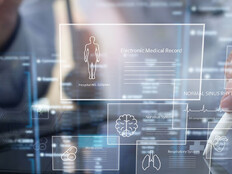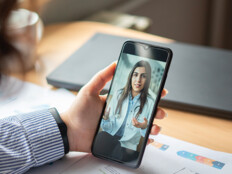How Remote Patient Monitoring Manages Conditions in Real Time
All patients mean to follow their doctor’s instructions, but once they leave the office of a healthcare professional, not all follow through.
For example, women with pregnancy-associated hypertension are typically told by their physicians to follow up one week after being discharged from the hospital, then, like all women post-partum, again in four to six weeks. Compliance with those instructions, however, is far from ideal: Nationally, only 30 to 40 percent of women go for the four- to six-week follow-up, which could affect women not just while they have infants, but for life.
“Women who develop this problem are more likely later in life to develop either hypertension or other cardiovascular issues,” says Dr. Richard H. Beigi, chief medical officer of the University of Pittsburgh Medical Center Magee-Women’s Hospital.
What is Remote Patient Monitoring?
UPMC came up with a solution: remote patient monitoring, or RPM. Patients are given a way to have their medical status measured — in this case, using a blood pressure cuff — and then, through an app, have that reading checked and recorded with a qualified medical professional at a centralized monitoring system.
“Generic instructions are not really tailored to where I am as a person and the context in which I’m consuming health services,” says Cynthia Burghard, research director at IDC Health Insights. “This can lead to poor compliance for behavior change that affects health for chronic illness and is costly.”
Getting back to the doctor for check-ins, especially in rural areas, can be both inconvenient and expensive, which is where digital solutions can step in and increase patient engagement.
It’s getting easier too as the adoption of smartphones and fitness-tracking devices become the norm; the new Apple Watch even includes its own electrocardiogram monitor.
DOWNLOAD: Learn more about how mobile tools are enabling the next generation of care!
Remote Patient Monitoring Statistics
In 2016, seven million people used remote monitoring and connected medical devices as part of their care. That number could jump to 50.2 million in five years, and it is also estimated that remote patient monitoring revenue will increase from $7.5 billion in 2016 to more than $32.4 billion by 2021, according to a recent report.
Remote patient monitoring is seen as a way to help patients who are both in great need and also have high healthcare costs, like those with chronic conditions, which affect six in 10 adult Americans according to the RAND Corporation; 43 percent have more than one chronic condition. The Centers for Disease Control and Prevention also estimates that chronic conditions account for more the most deaths in the U.S. and are responsible for 90 percent of healthcare expenditures.
Centralized Monitoring with BYOD-Based Apps
Of course, remote patient monitoring means that data is coming back in, and that it needs to be reviewed. That’s where centralized monitoring systems come in.
“A lot of practices are licensing care management applications and managing a whole array of patient data coming in from remote patient monitoring,” says Burghard.
They become a hub where appropriate medical professionals can take in data coming from patients (whether from one or multiple sources), review it and alert a patient that they need an intervention, whether it’s prescribing a new medication or calling 911 to get an ambulance to that patient. If the readings are normal, then it goes into the patient’s medical records and becomes another data point on an electronic monitoring record or electronic health record, or both.
“It’s the data that’s really affecting the infrastructure,” says Burghard. “Devices are in the patient’s home. What do you do with the data when you get it so that you can take the actions that you need? That’s the infrastructure impact that I’m seeing in physician offices or hospitals or whoever’s got the dashboard.”
Telehealth Technology Makes Remote Patient Monitoring Easy
In the pilot phase of the UPMC study, 57 women were given a blood pressure cuff and an app to put onto their own smartphones because “pretty much everybody these days has their own smartphone. It makes sense for someone to use their own because they’re used to it.”
For most women who have hypertension during pregnancy, the condition goes away after they gave birth. In the pilot phase of this study, UPMC found that 57 percent of participants were able to skip that first one-week appointment because they were already being monitored via their phones and a blood pressure cuff.
UPMC also found that 88 percent of women came back for their six-week post-partum visit, compared to 30 to 40 percent nationally. UPMC has continued the study past the pilot phase and has now enrolled over 200 women in the program.
“The convenience is really important, as is the potential to have better real-time or near-real-time management of their conditions, and having a potential decrease in office visits,” says Beigi. The healthcare organization is also considering how it can use the same technology for gestational diabetes and other cardiovascular issues.
“We see a very bright future on the use of this technology in certain conditions,” Beigi adds.










